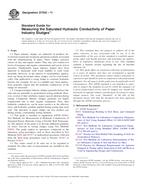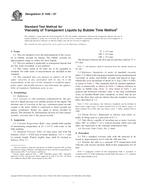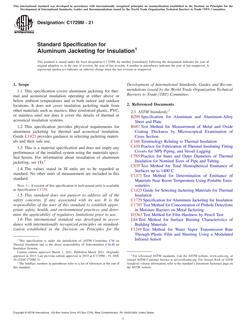1.1 This test method covers a procedure to (a) identify asbestos in dust and (b) provide an estimate of the surface loading of asbestos in the sampled dust, reported as either the mass of asbestos per unit area of sampled surface or as the mass of asbestos per mass of sampled dust.
1.1.1 If an estimate of asbestos structure counts is to be determined, the user is referred to Test Method D 5755.
1.2 This test method describes the equipment and procedures necessary for sampling, by a microvacuum technique, non-airborne dust for levels of asbestos. The non-airborne sample is collected inside a standard filter membrane cassette from the sampling of a surface area for dust which may contain asbestos.
1.2.1 This procedure uses a microvacuuming sampling technique. The collection efficiency of this technique is unknown. Variability of collection efficiency for any particular substrate and across different types of substrates is also unknown. The effects of sampling efficiency differences and variability on the interpretation of dust sampling measurements have not been determined.
1.3 Asbestos identified by transmission electron microscopy (TEM) is based on morphology, selected area electron diffraction (SAED), and energy dispersive X-ray analysis (EDXA). Some information about structure size is also determined.
1.4 This test method is generally applicable for an estimate of the surface loading of asbestos starting from approximately 0.24 pg of asbestos per square centimetre (assuming a minimum fiber dimension of 0.5 μm by 0.025 μm, see 17.8), but will vary with the analytical parameters noted in 17.8.
1.4.1 The procedure outlined in this test method employs an indirect sample preparation technique. It is intended to disaggregate and disperse asbestos into fibrils and fiber bundles that can be more accurately identified, counted, and sized by transmission electron microscopy. However, as with all indirect sample preparation techniques, the asbestos observed for quantitation may not represent the physical form of the asbestos as sampled. More specifically, the procedure described neither creates not destroys asbestos, but it may alter the physical form of the mineral fibers.
1.5 The values stated in SI units are to be regarded as the standard.
1.6 This standard does not purport to address all of the safety concerns, if any, associated with its use. It is the responsibility of the user of this standard to establish appropriate safety and health practices and determine the applicability of regulatory limitations prior to use.
Product Details
- Published:
- 04/15/2008
- Number of Pages:
- 13
- File Size:
- 1 file , 180 KB
- Redline File Size:
- 2 files , 340 KB


